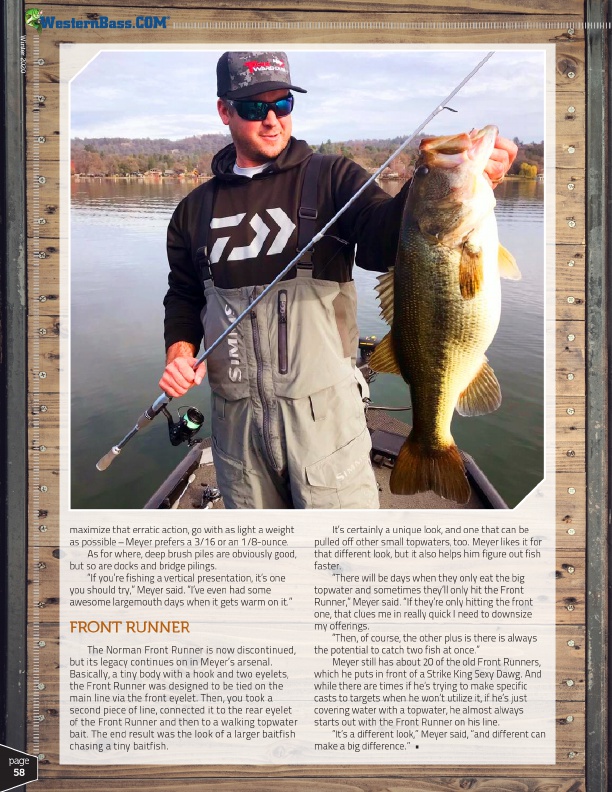
®
Winter 2020
page 58
maximize that erratic action, go with as light a weight as possible – Meyer prefers a 3/16 or an 1/8-ounce.
As for where, deep brush piles are obviously good, but so are docks and bridge pilings.
“If you’re fishing a vertical presentation, it’s one you should try,” Meyer said. “I’ve even had some awesome largemouth days when it gets warm on it.”
FRONT RUNNER
The Norman Front Runner is now discontinued, but its legacy continues on in Meyer’s arsenal. Basically, a tiny body with a hook and two eyelets, the Front Runner was designed to be tied on the main line via the front eyelet. Then, you took a second piece of line, connected it to the rear eyelet of the Front Runner and then to a walking topwater bait. The end result was the look of a larger baitfish chasing a tiny baitfish.
It’s certainly a unique look, and one that can be pulled off other small topwaters, too. Meyer likes it for that different look, but it also helps him figure out fish faster.
“There will be days when they only eat the big topwater and sometimes they’ll only hit the Front Runner,” Meyer said. “If they’re only hitting the front one, that clues me in really quick I need to downsize my offerings.
“Then, of course, the other plus is there is always the potential to catch two fish at once.”
Meyer still has about 20 of the old Front Runners, which he puts in front of a Strike King Sexy Dawg. And while there are times if he’s trying to make specific casts to targets when he won’t utilize it, if he’s just covering water with a topwater, he almost always starts out with the Front Runner on his line.
“It’s a different look,” Meyer said, “and different can make a big difference.” •